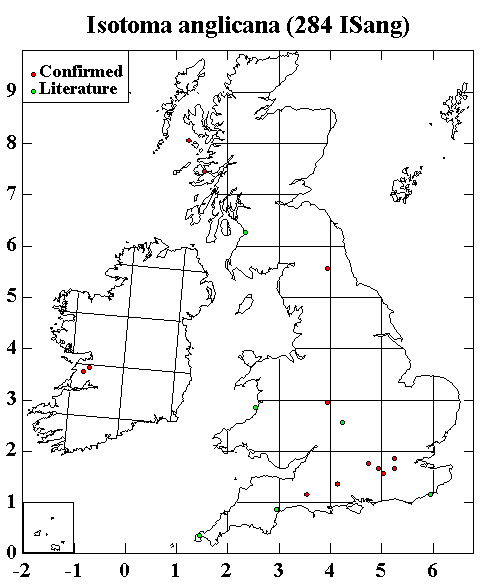|
Isotoma anglicana has long been considered to be a variety of Isotoma viridis. However, it is now generally accepted that it is a species in its own right. Isotoma anglicana is more bluish-grey/brown in colour (Fig. 1) than Isotoma viridis which tends to be more greenish (but this is not entirely reliable). The most distinctive character is the presence of two pairs of 'teeth' on the thickened apical edge of the manubrium (Fig. 2). I have not found other characters that reliably separate the two species in British and Irish material. Both Isotoma anglicana and Isotoma viridis have three teeth on the mucro (Fig. 3). There is insufficient ecological information at present to indicate habitat preferences in UK/Eire.
Many of the literature records for Isotoma viridis must refer to Isotoma anglicana which is undoubtedly widespread and common. The two species are sometimes found mixed together in the same sample.
Recently, Fjellberg (2003) has revised the 'Isotoma viridis complex' and has discovered the further species Isotoma caerulea. He has seen specimens from one site in England (Wolverhampton) but Isotoma caerulea is likely to prove to be much more widespread.
Back to main page
|
|







